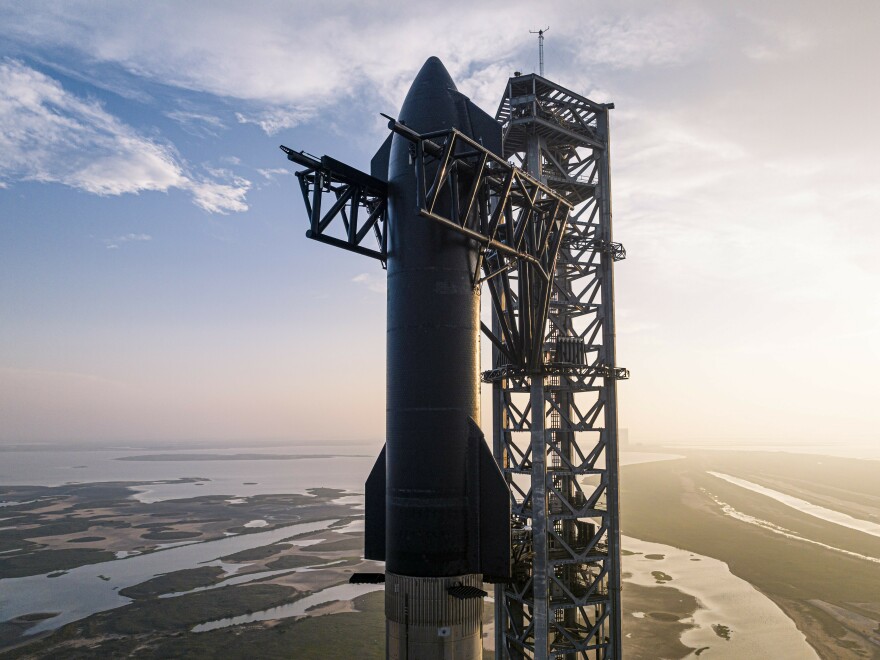Starlink #2 needed 17 corrections
February 28, 2024

The FAA has detailed and listed the 17 technical corrections that need to be carried out of the giant SpaceX Starship rocket before the third test flight can take place. The FAA says that its investigation into the rocket’s November 17th 2023 explosion has concluded. All updates are underway.
SpaceX issued its own comments and updates on progress to date, saying that the most likely root cause for the booster [explosion] was determined to be filter blockage where liquid oxygen is supplied to the engines, leading to a loss of inlet pressure in engine oxidizer turbopumps that eventually resulted in one engine failing in a way that resulted in loss of the vehicle. SpaceX has since implemented hardware changes inside future booster oxidiser tanks to improve propellant filtration capabilities and refined operations to increase reliability.
At vehicle separation, Starship’s upper stage successfully lit all six Raptor engines and flew a normal ascent until approximately seven minutes into the flight, when a planned vent of excess liquid oxygen propellant began. Additional propellant had been loaded on the spacecraft before launch in order to gather data representative of future payload deploy missions and needed to be disposed of prior to reentry to meet required propellant mass targets at splashdown.
A leak in the aft section of the spacecraft that developed when the liquid oxygen vent was initiated resulted in a combustion event and subsequent fires that led to a loss of communication between the spacecraft’s flight computers. This resulted in a commanded shut down of all six engines prior to completion of the ascent burn, followed by the Autonomous Flight Safety System detecting a mission rule violation and activating the flight termination system, leading to vehicle breakup. The flight test’s conclusion came when the spacecraft was as at an altitude of ~150 km and a velocity of ~24,000 km/h, becoming the first Starship to reach outer space.
SpaceX has implemented hardware changes on upcoming Starship vehicles to improve leak reduction, fire protection, and refined operations associated with the propellant vent to increase reliability. The previously planned move from a hydraulic steering system for the vehicle’s Raptor engines to an entirely electric system also removes potential sources of flammability.
The water-cooled flame deflector and other pad upgrades made after Starship’s first flight test performed as expected, requiring minimal post-launch work to be ready for vehicle tests and the next integrated flight test.
Following the flight test, SpaceX led the investigation efforts with oversight from the FAA and participation from NASA, and the National Transportation Safety Board.
Other posts by Chris Forrester:
- Intelsat C-band ‘insider trading’ case dismissed
- UK Space Agency funds de-orbit scheme for OneWeb
- AST SpaceMobile to launch satellites in August
- SpaceRISE silent on reports of demise
- Project Kuiper seeks India licence
- FAA suspends SpaceX launches
- SpaceX vs AST SpaceMobile
- Eumetsat explains Ariane 6 cancellation
- AST SpaceMobile examines emergency call obligations
